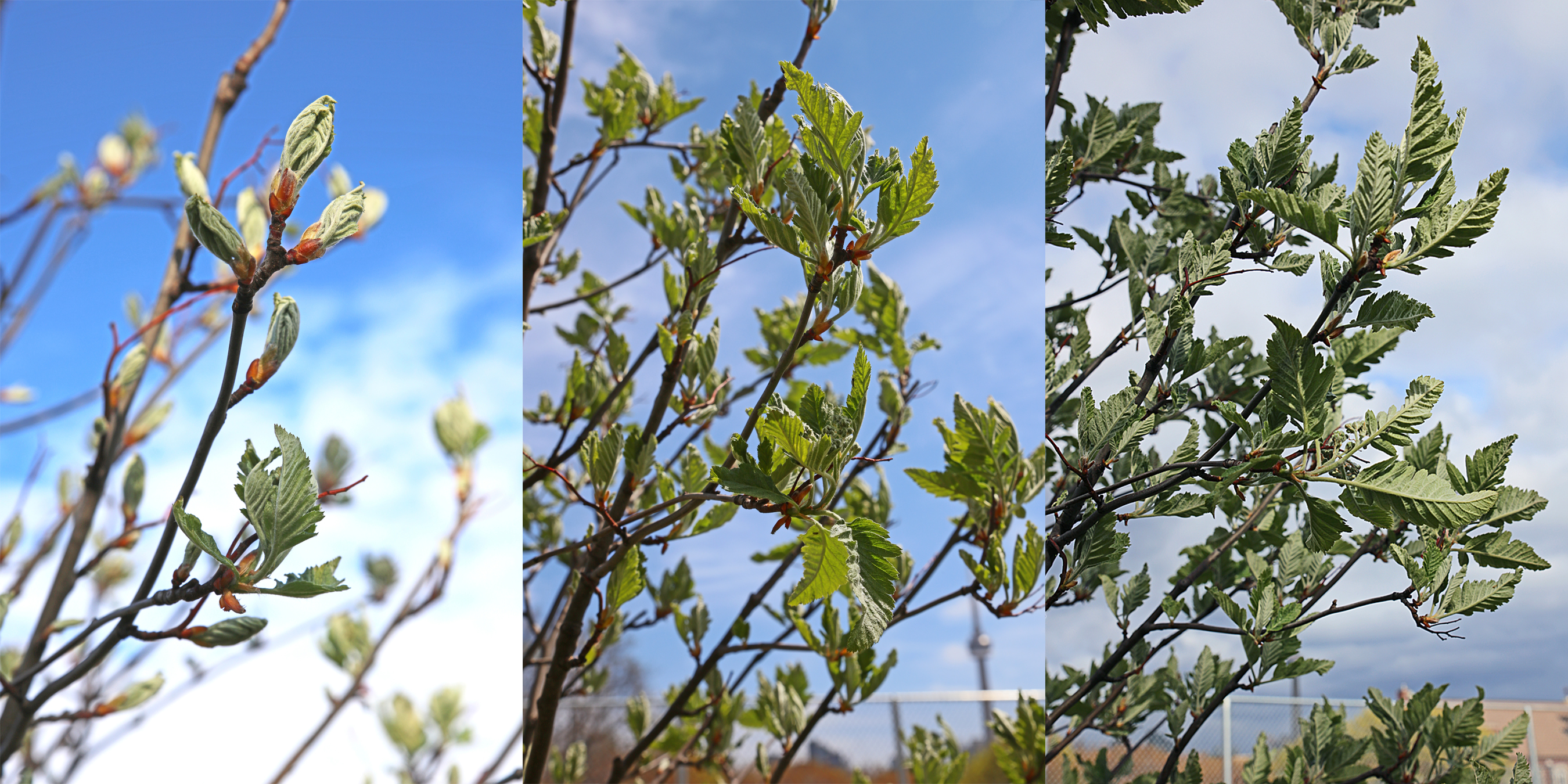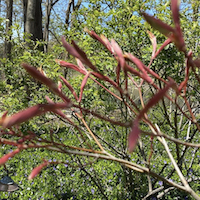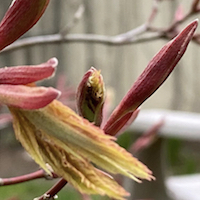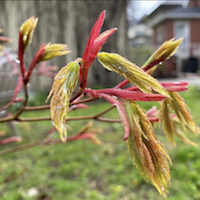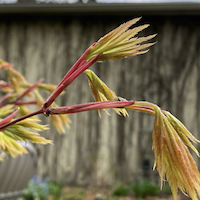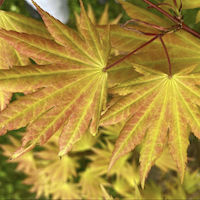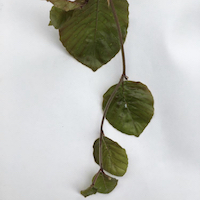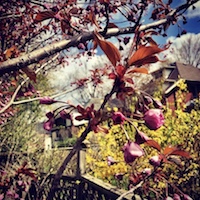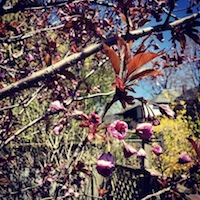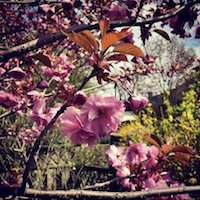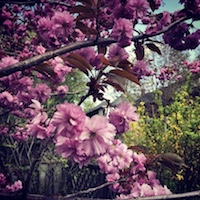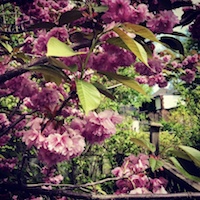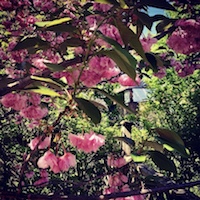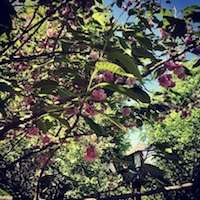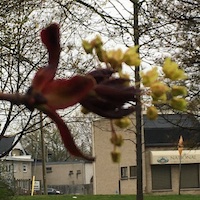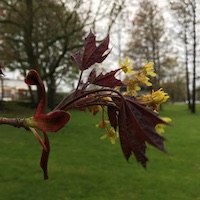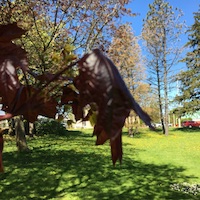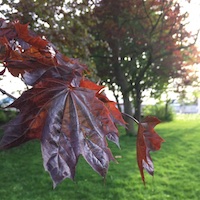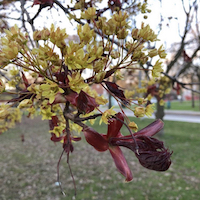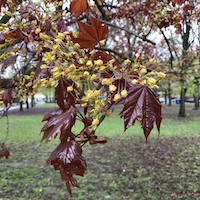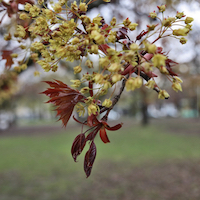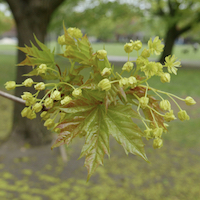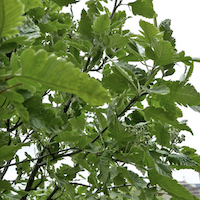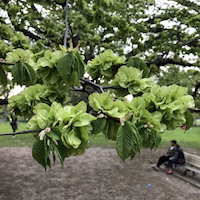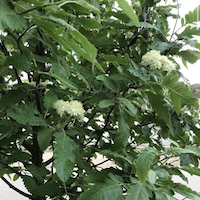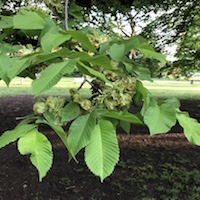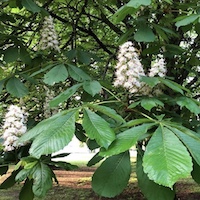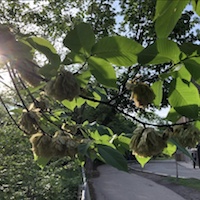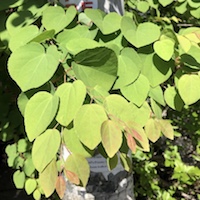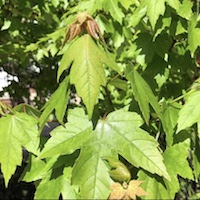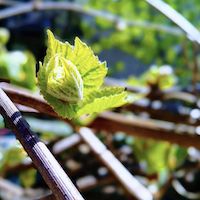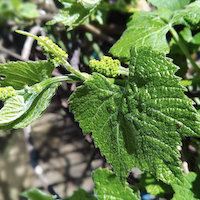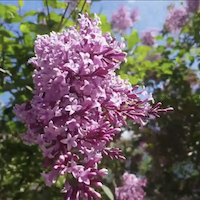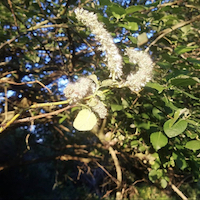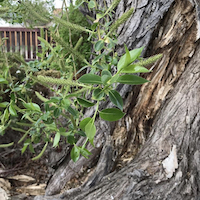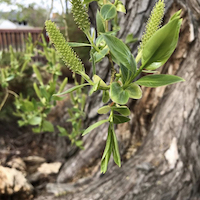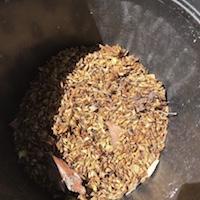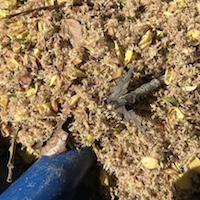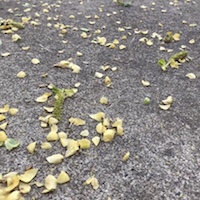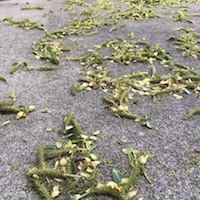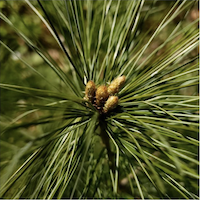Digital Programming
Life in Colour
Noni Kaur, Burton Kramer, Patryk Tom, and William Perehudoff
Curated by Haleigh Mitchell
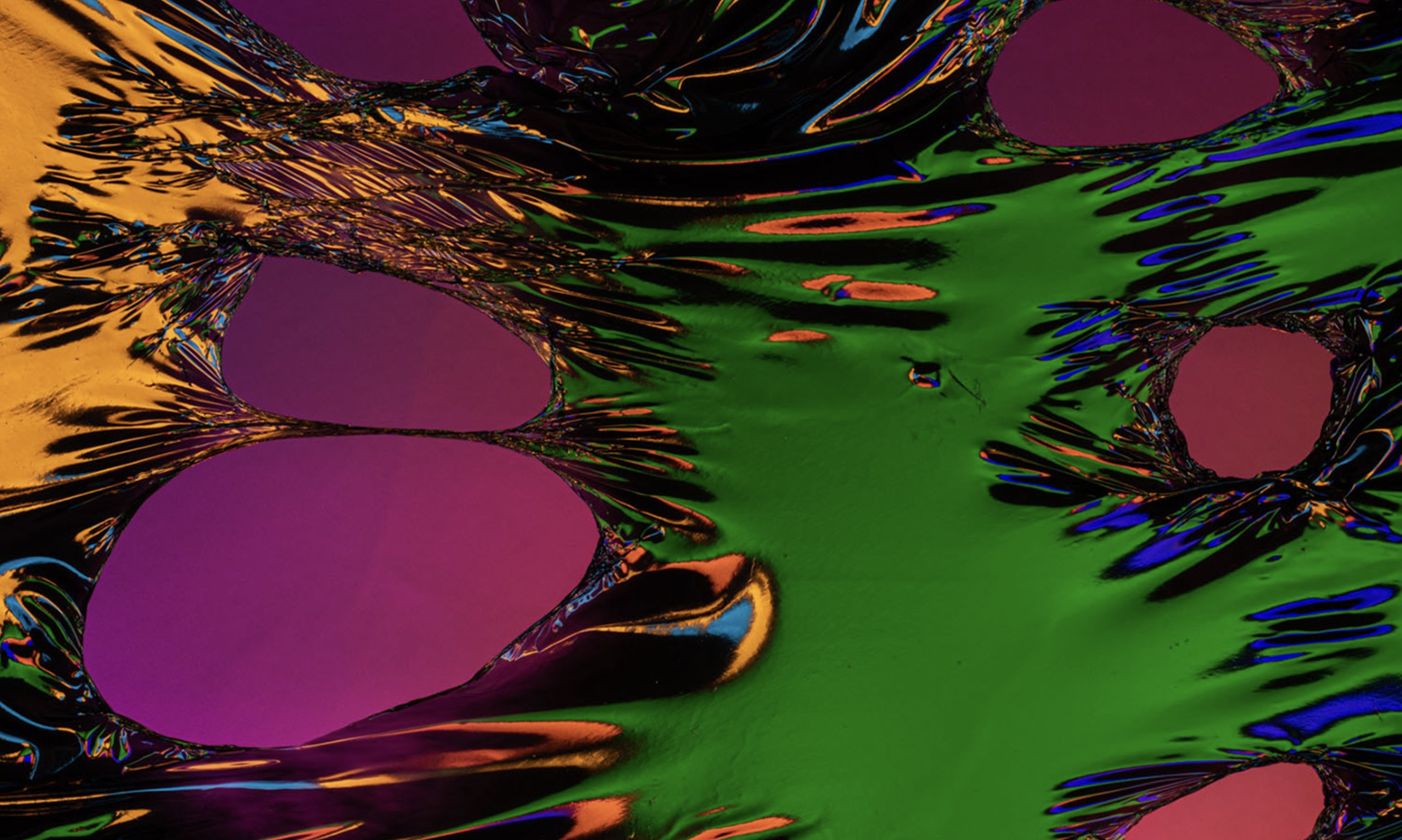 Patryk Tom, The negativity directed at you is inspired, your crystals can’t help you, you are nothing (detail), 2020. Archival inkjet print. Courtesy of the artist.
Patryk Tom, The negativity directed at you is inspired, your crystals can’t help you, you are nothing (detail), 2020. Archival inkjet print. Courtesy of the artist.
Life in Colour welcomes you to indulge in the delight and experience the joy of colour. How does colour make you feel? Do you associate the colour yellow with feelings of happiness? And orange with positive energy?
As a powerful communication tool, colour can be used to evoke emotion, create meaning, challenge perception, and even provoke physiological responses. With an astonishing one million colours visible to the human eye, it is no surprise that colour has a great impact on our everyday lives. Recognized as a form of visual language, colour shapes the human experience — uniting and engaging communities across the globe.
Colour harnesses our attention and shapes our understanding of the world around us. Inextricably linked to emotion, colour harmony, the aesthetic combination of colours, touches the soul and raises feelings of the sublime.
Life in Colour explores the communicative potential of colour and its multiple manifestations in Canadian art. Featuring artwork from William Perehudoff, Noni Kaur, Patryk Tom, and Burton Kramer, this virtual exhibition investigates the profound power of colour in art. Working across media including painting, sculpture, and photography, each artist celebrates the splendour of colour through chromatic inventiveness and thoughtful design. From vibrant hues to subdued tones and expressive to calculated forms, the featured artists adopt a range of artistic techniques and styles to highlight the transformative power of colour in art.
To access the complete virtual exhibition, click here.
About the curator
Haleigh Mitchell is a graduate student at Parsons School of Design where she is pursuing a Master of Professional Studies in Fashion Management.
She recently graduated from Western University with an Honours Double Major in Art History and in Media, Information, and Technoculture. Passionate about the intersection of art, media, fashion, and technology, Haleigh is eager to pursue a career in digital storytelling.
Following a lifelong fascination with the transformative power of colour, in 2021, Haleigh participated in the course Colour Theory for Digital Design with OCADU. Her experience studying Art History, Media, Information, and Techno-culture and the communicative potential of colour inspired her to curate an exhibition for McIntosh Gallery that highlights the evocative power of colour in Canadian art. In Summer 2022, Haleigh was hired as Digital Curatorial and Outreach Assistant at McIntosh Gallery through the Canadian Museums Association's Young Canada Works program. Life in Colour was her curatorial and outreach project.
Archive:
The Space Between
The Space Between
Adrienne Dagg, Brian Jones, Sharmistha Kar, Shannon King, Jason McLean, Kim Ondaatje, Jenna Faye Powell, Niloufar Salimi, Kakulu Sagiaktuk, Gillian Saward
Curated by Natalie Scola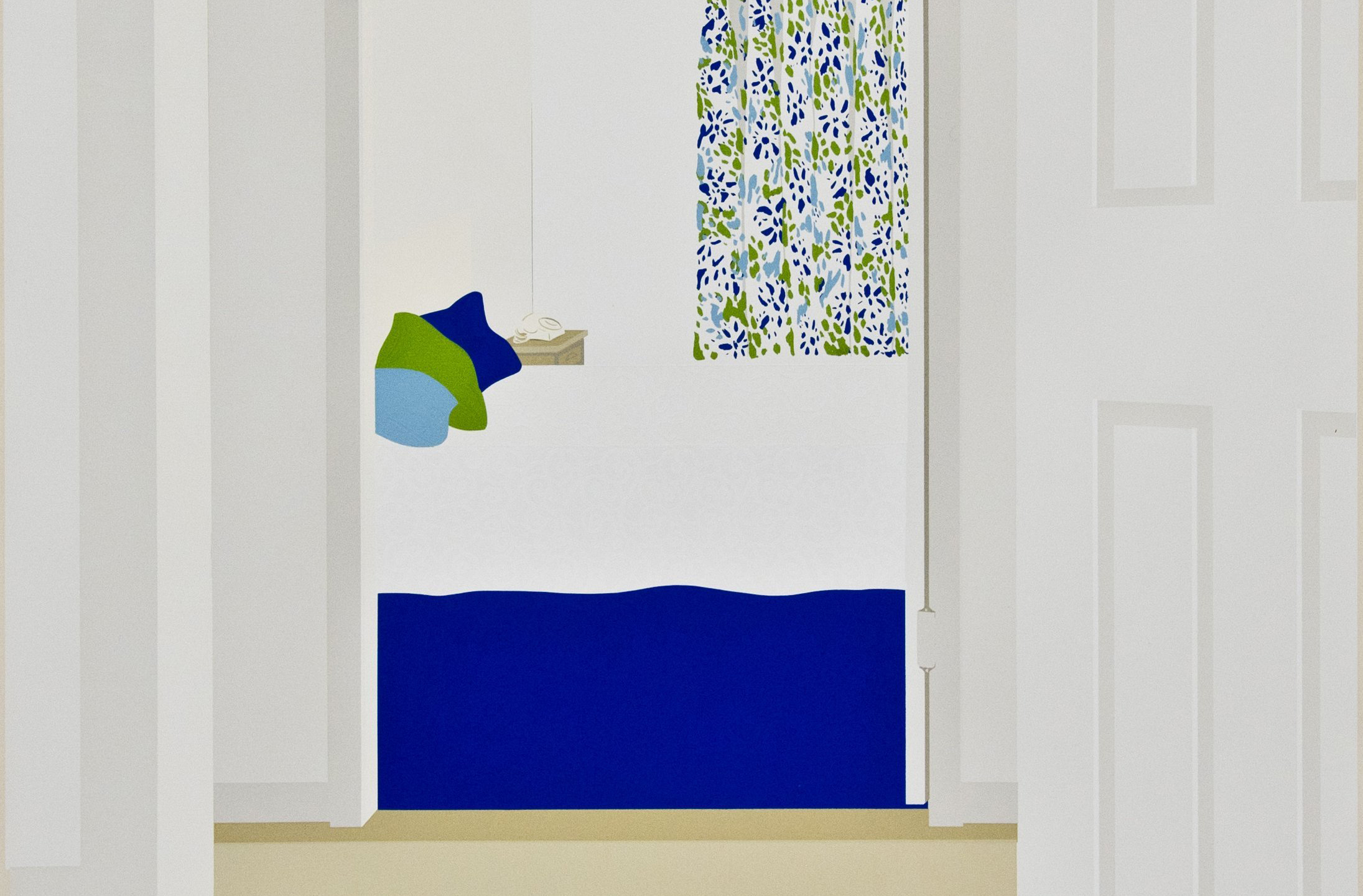 Kim Ondaatje, Blue Bedroom (detail, From The House on Piccadilly Street Series) 1970. Serigraph on paper. McIntosh Gallery Collection, Western University. Purchase, S.O.G.S Cultural Committee, 1971.
Kim Ondaatje, Blue Bedroom (detail, From The House on Piccadilly Street Series) 1970. Serigraph on paper. McIntosh Gallery Collection, Western University. Purchase, S.O.G.S Cultural Committee, 1971.In her 1995 essay Homemaking, Jamaica Kincaid writes, “A house has a physical definition; a home has a spiritual one.” This is tidy way of summing up the difference between house and home. The words have a similar denotation, or primary meaning, but for each, there is a deeper association. Every individual understands home differently, which makes defining the term difficult. Is home the place you were born and raised? Is it the place you chose to live as an adult? Is home even a place at all, or can it simply be a feeling? Home, then, becomes a relative term.
The Space Between is a study of images of the home in Canadian art. This virtual exhibition includes works from emerging and established artists and highlights the range of emotions experienced in the home setting. The Space Between represents how the home serves as a backdrop for life’s events. There is no single way to define a home, and the selected works in this exhibition illustrate the varied meanings that it can take.
Our interpretation of home affects our understanding and experience of place and belonging. The spaces that we live in develop complex meanings, stemming from their symbolic associations, social understandings, cultural experiences and special functions. French theorist Pierre Bourdieu calls this habitus, the way that cultural and social settings are established and reproduced. A house (structure) becomes a home (place) when culture is created and then becomes part of an individual’s practice. With habitus, a home is not an empty space; it becomes imbued with meaning and, in turn, constructs meaning for the inhabitants. Since the home is the primary site of habitus, each person’s experience with it will be different. In Moonlight Under the Stars, Jason McLean constructs a mental map that defines varied geographical areas of memory and social histories. His is not a traditional depiction of home or place, rather it is a representation of what the artist feels are important locations.
The concept of home is customarily associated with ideas of domesticity. The “cult of domesticity” in the 19th century developed into the nuclear family, with repetitive and endless suburban streets by the 1950s, when the home was portrayed as a sanctuary and a place for family. However, this perception ignored domestic conflict and familial dysfunction. Gillian Saward’s Homage #12 depicts domestic interiors that have an underlying element of loneliness and melancholy.
In the last year, our idea of home has evolved. The COVID-19 global pandemic has forced people to isolate; this has changed the relationships people have with their homes and living spaces. Shannon King’s Staying Home: Portable Agoraphobe demonstrates how we have come to view the home as a protected space against a global pandemic, but has also increased our fear of the outside world. That safe home is now also a workplace, a social space, and an area to relax. With an increase in remote working arrangements, people have fewer ways of differentiating between home and work or school and previously separated spaces are now blending. The consolidation of functional spaces coupled with the isolation inflicted by the pandemic has made people feel trapped: unable to be with friends and family, confined in bedrooms and make-shift home offices, huddling around computer screens to learn or to work. Home as a refuge, a place to come together in safety, has now become a double-edged sword. A year and a half in, nerves are fraying after spending too much time together or too much time alone.
The pandemic has changed the way we navigate our home spaces, resulting in an increased desire to modify the areas they inhabit. As working from home becomes more normalized, people crave more functional and comfortable workspaces: “Zoom Rooms”, outdoor sheds, and niches under the stairs have all been optimized. As families share spaces, common living areas have had to be adapted for different uses: the basement storage area is now also a home gym, the guest room is now a room for virtual learning, the dining room is now an office.
Colour trends have been moving toward calm shades that evoke serenity and relaxation as a refuge from the uncertainty outside the home. After being relegated indoors for long periods, people have developed a desire to access outdoor spaces. This has created an unprecedented migration to suburban or rural areas. People are also moving to different locations with the hope that work will remain remote. Areas of Canada that had historically low real estate prices, like the Atlantic provinces, are seeing a massive explosion in home prices as people search for more space.
The pandemic has also revealed darker relationships within the home. Gender-based violence calls increased drastically during the pandemic, as vulnerable people were unable to access necessary supports within their communities. The conditions of the pandemic allowed abusers to increase control over their victims, as well as strengthen barriers to escaping abusive situations. Under these conditions, the home is no longer a safe space or sanctuary.
Another consequence of the pandemic is an increase in homelessness. With the loss of jobs, people were unable to pay rent, and tent cities sprung up in public parks, which police then forcibly removed. Shelters have experienced COVID-19 outbreaks, leading people to feel that encampments are a safer alternative. Having a fixed position allows people to access their support systems, communities and jobs; forcible removal disrupts people who rely on a place of safety. Developers are unwilling to build affordable housing, and house prices have dramatically increased during the pandemic, with the average house price in Canada rising 38% from last year. A decrease in the number of available homes and the rising costs of raw materials have resulted in limited availability in the housing market. Combined with low mortgage rates and a desire for more space, housing prices have skyrocketed, making an inflated housing market even more unattainable for some. While the middle and upper classes have been able to absorb the economic impact of the pandemic, lower-income populations, people of colour and other marginalized groups have sorely felt its effects.
The Space Between illustrates how homes take on different forms as well as different meanings. It reveals how homes are places of shelter but also places of entrapment. Our relationships with our homes are continually changing – no one can predict what homes will look like in the future. The works in the exhibition encourage the viewer to reflect on their own understanding of what home means to them.
Access a virtual exhibition publication for The Space Between here.
About the curator
Natalie Scola is a second-year student in the Master of Museum Studies Program at the University of Toronto. She holds an honours BA in Art History & Museum Studies from Western University (2020). Natalie is interested in museum education and programming – especially getting people to think about art! When not visiting museums, Natalie spends her time thinking about cooking and baking, and how food can be a connecting point for people, heritage and museums. In her spare time, Natalie loves to cook, read lots of books and garden. In Summer 2021, Natalie was hired as Digital Curatorial and Outreach Assistant at McIntosh Gallery through the Canadian Museums Association's Young Canada Works program. The Space Between was her curatorial and outreach project.
six feet | between us
six feet | between us
Derek Boswell and Kevin Heslop
McIntosh Gallery commissioned photographer Derek Boswell and writer Kevin Heslop to collaborate on a series of texts and images based on their experience living in London, Ontario during the COVID-19 pandemic. Ten of Boswell’s photographs along with responsive texts by Heslop were shared weekly beginning on October 29, 2020. An exhibition of the same name was installed at McIntosh Gallery from January 13 to February 19, 2022. A virtual tour of the six feet | between us installation can be viewed here. About the artist
A graduate of Western University’s Department of Visual Arts, Boswell is known for images of defeatured, uninhabited urban and suburban environments that evoke the emptiness of contemporary public space.
October 29, 2020
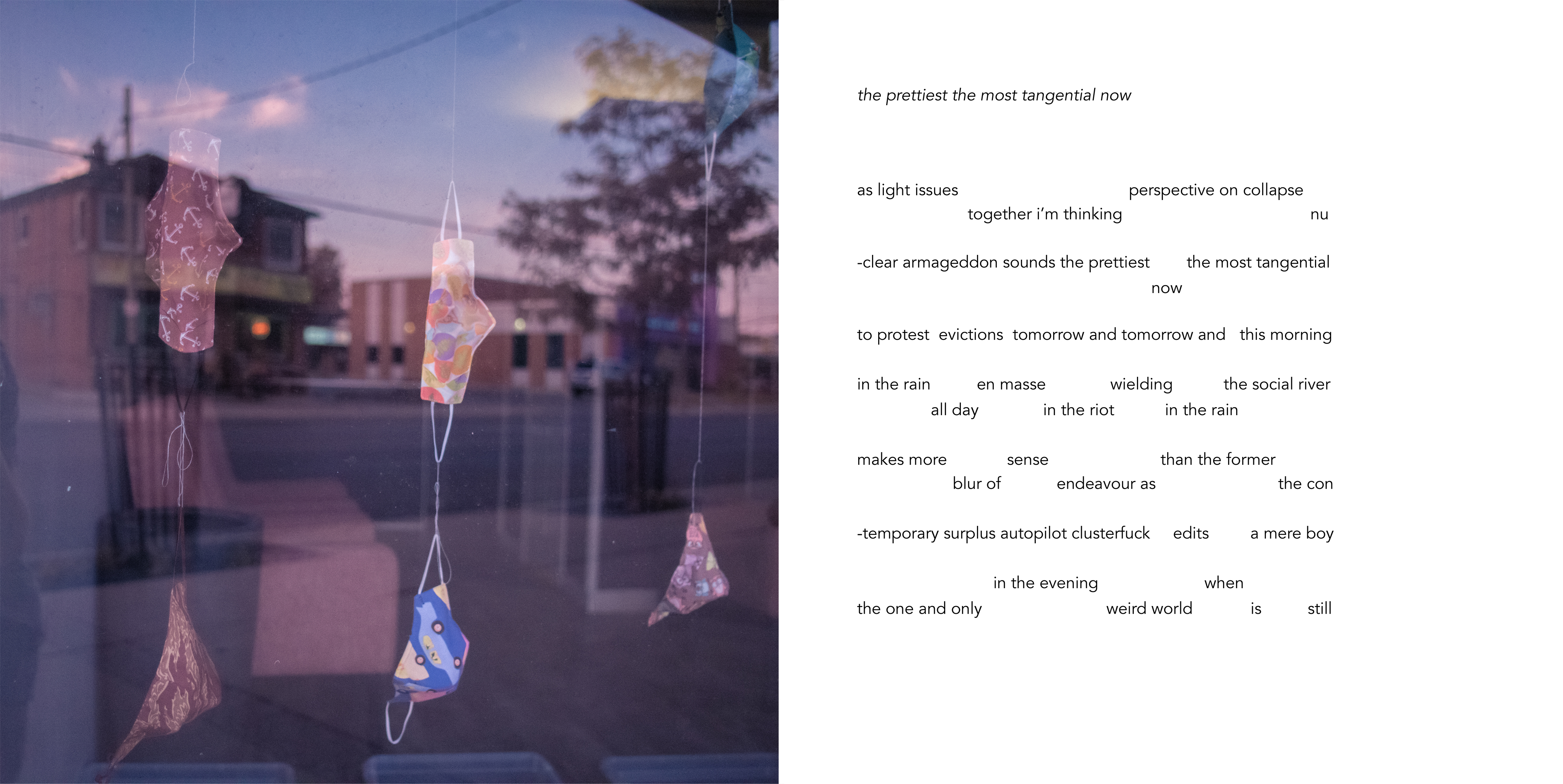
Derek Boswell, Window Dressing. Taken on August 13, 2020 @ 19:32 with a Full-Spectrum Converted Sony A7R.
November 5, 2020
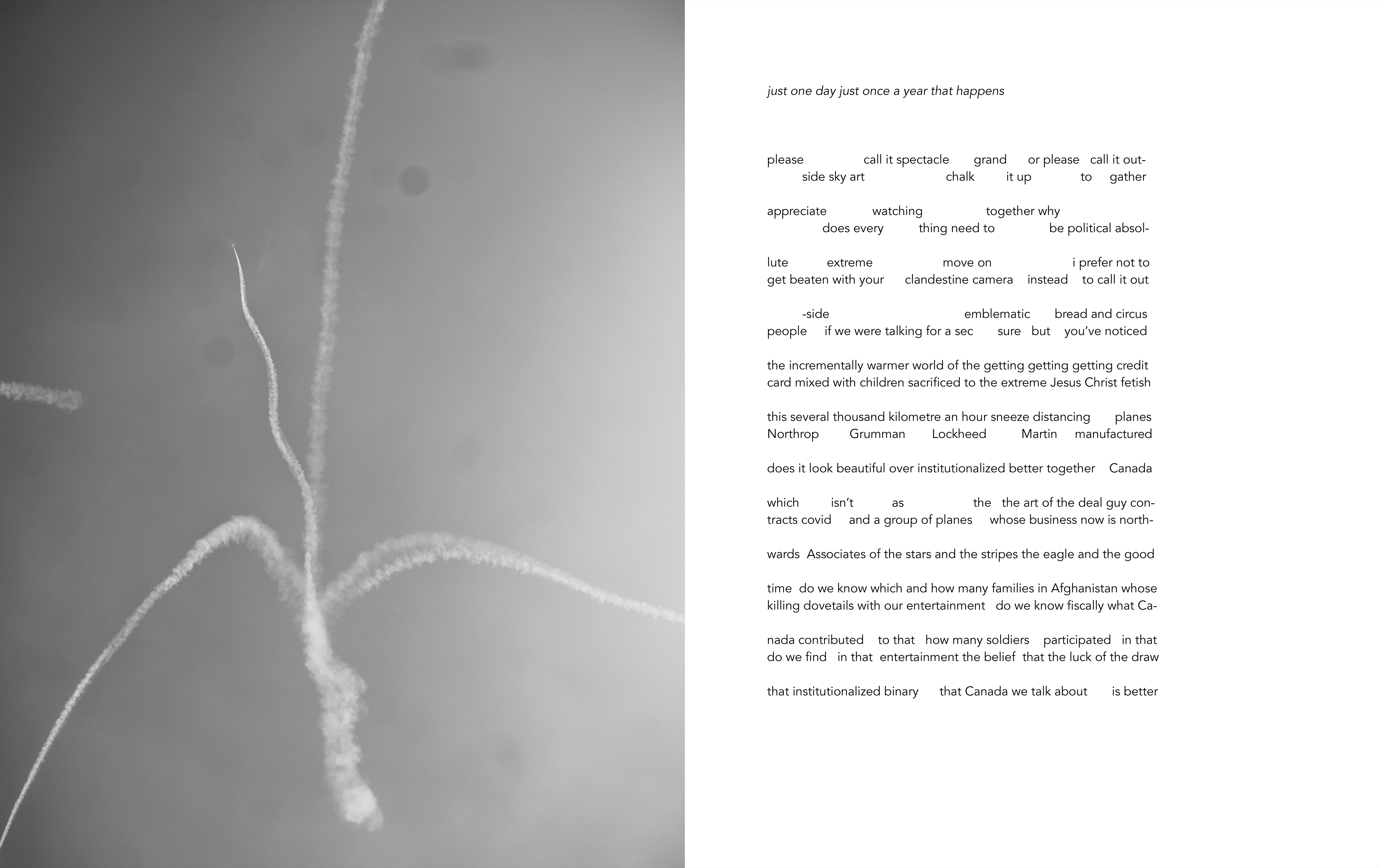
Derek Boswell, Maximal Distancing. Taken on September 12, 2020 @ 15:44 with a Full-Spectrum Converted Sony A7R.
November 12, 2020
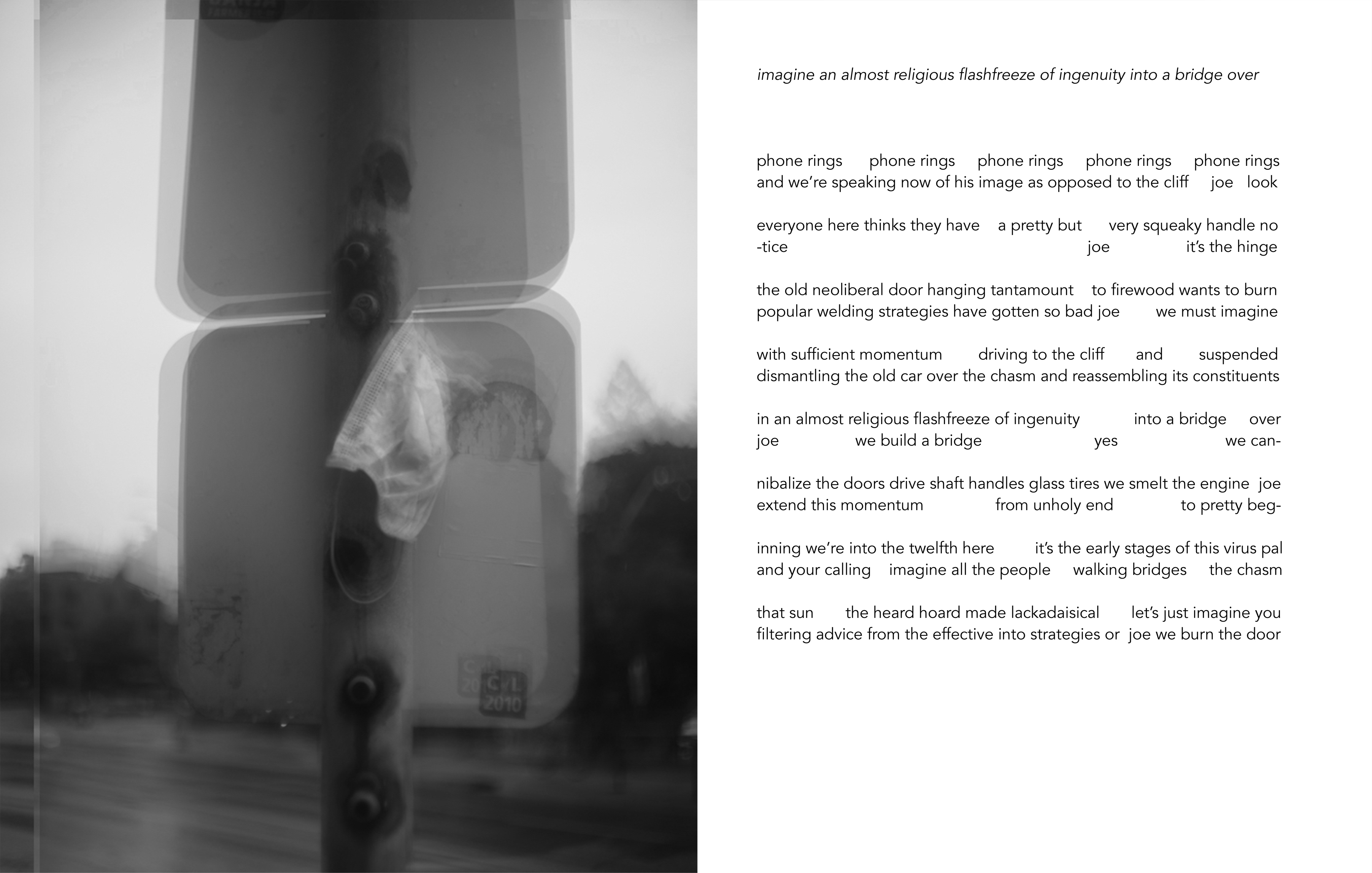
Derek Boswell, Flashfreeze. Taken on September 20th, 2020 @ 2:17pm with a Full-Spectrum Converted Sony A7R.
November 19, 2020
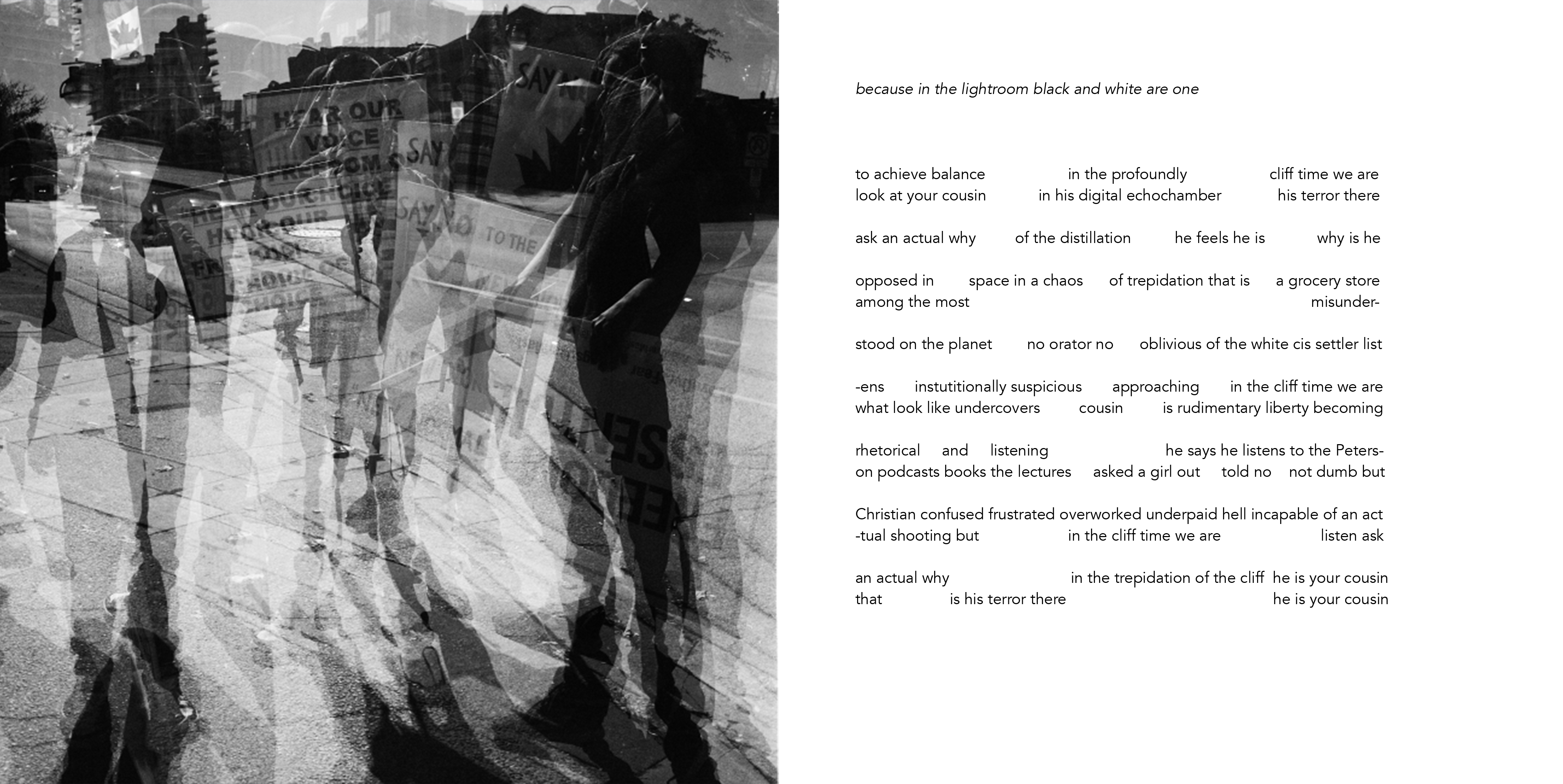
derek boswell, chaos of trepidation. taken on october 11st, 2020 @ 2pm with a rolleiflex 3.5b.
Poem edited by Conyer Clayton
November 26, 2020
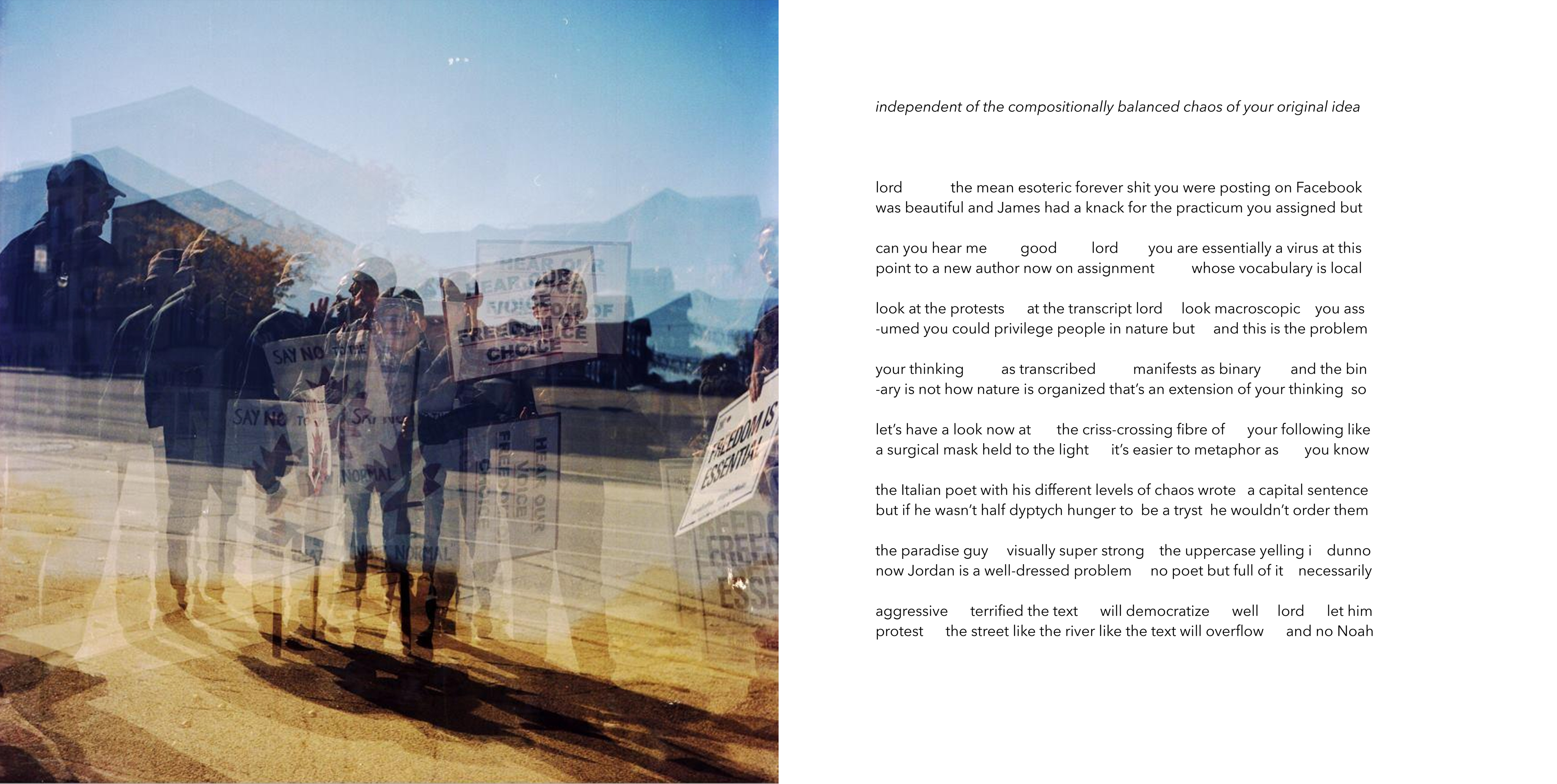
Derek Boswell, Balance and Chaos. Taken on October 11th, 2020 @ 3pm with a Rolleiflex 3.5B.
December 3, 2020
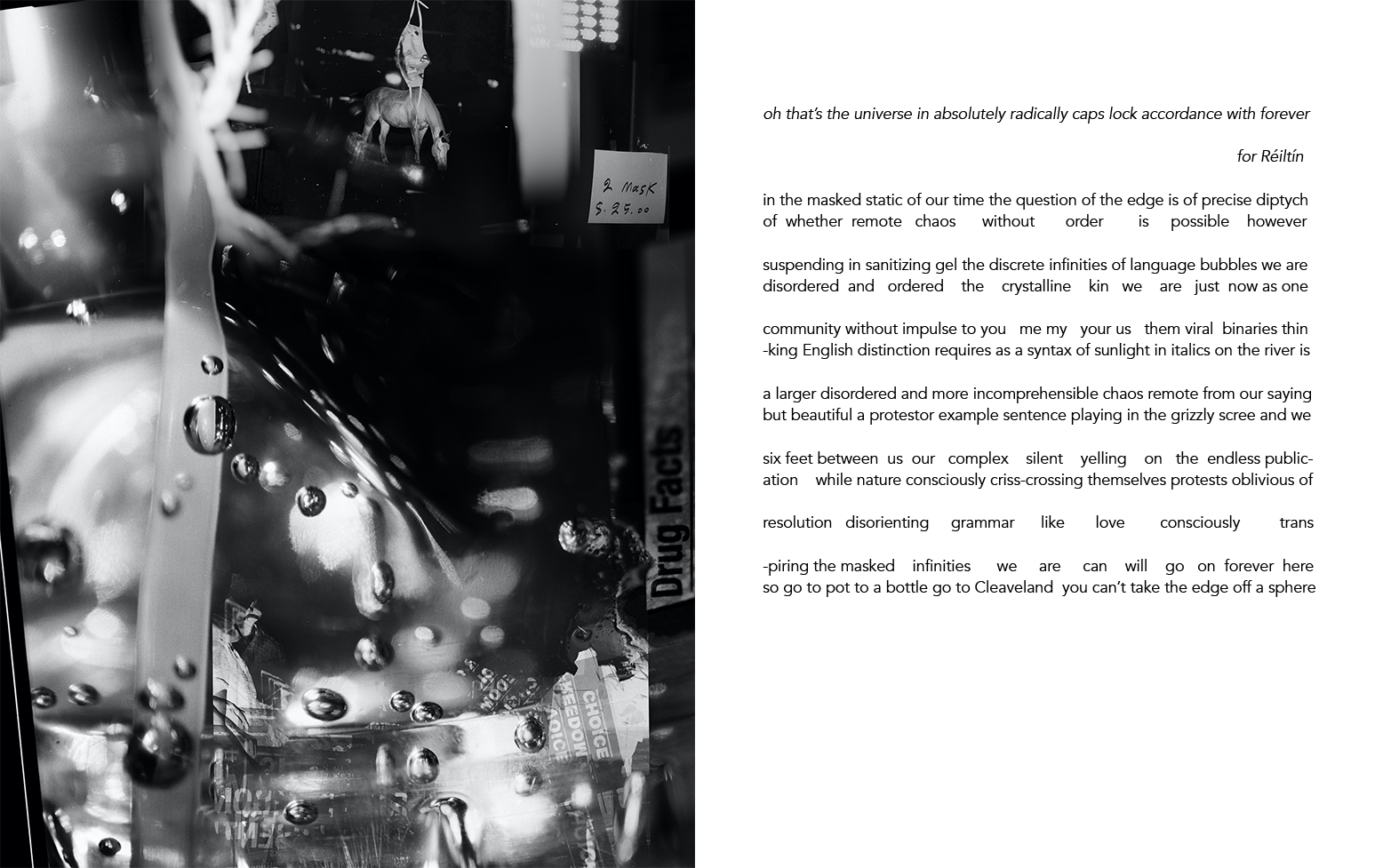
Derek Boswell, All The Pretty Horses. Taken on August 20th, November 29th, October 11th, and December 1st, 2020 @ 3am with a Linhof Technika V, Rolleiflex 3.5B.
December 10, 2020
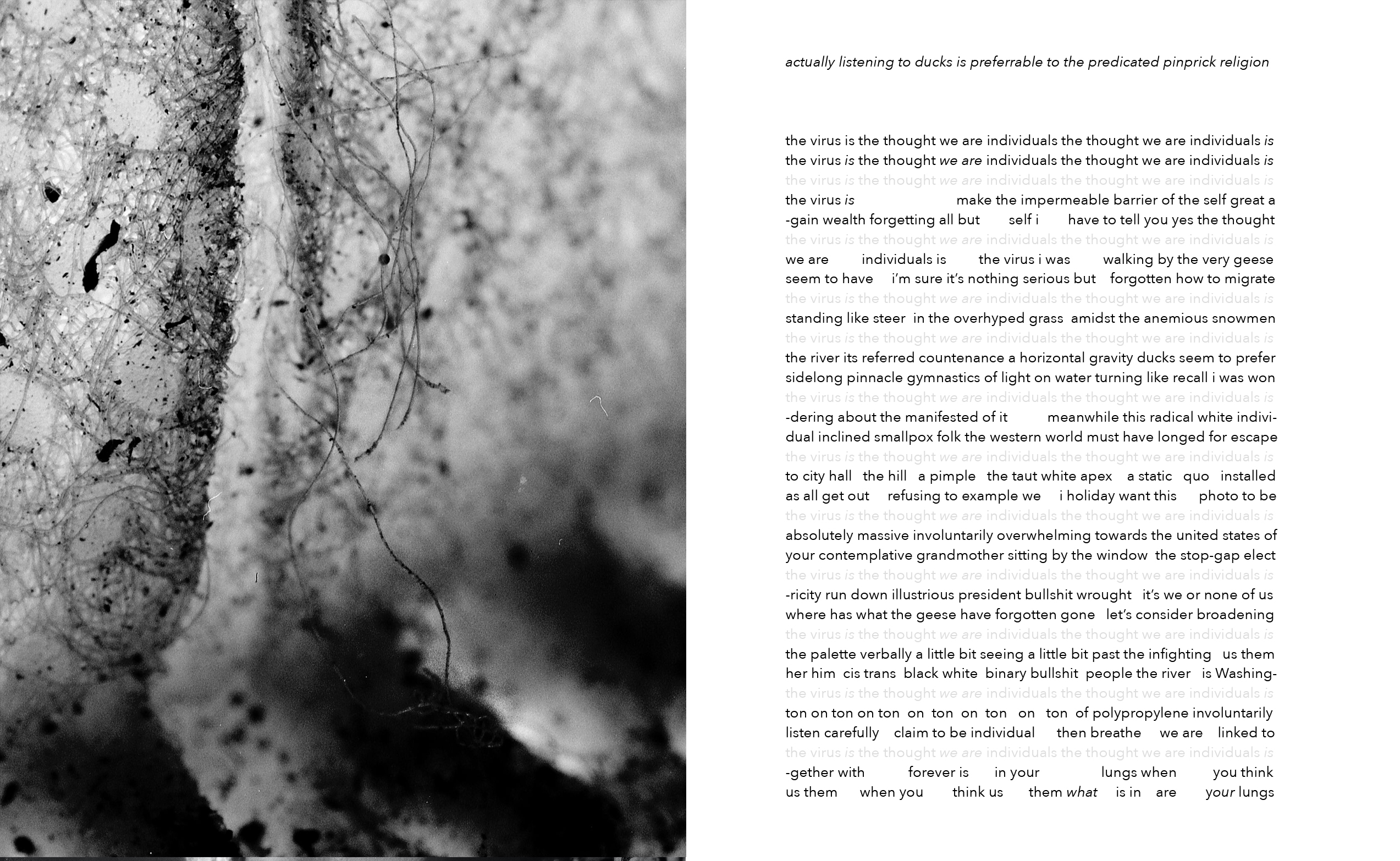
Derek Boswell, Predication. Taken on December 1st at 2am with a Linhof Technika V.
December 17, 2020

Derek Boswell, Defenestration. Taken on December 1st @ 2am with a Linhof Technika V.
January 14, 2021
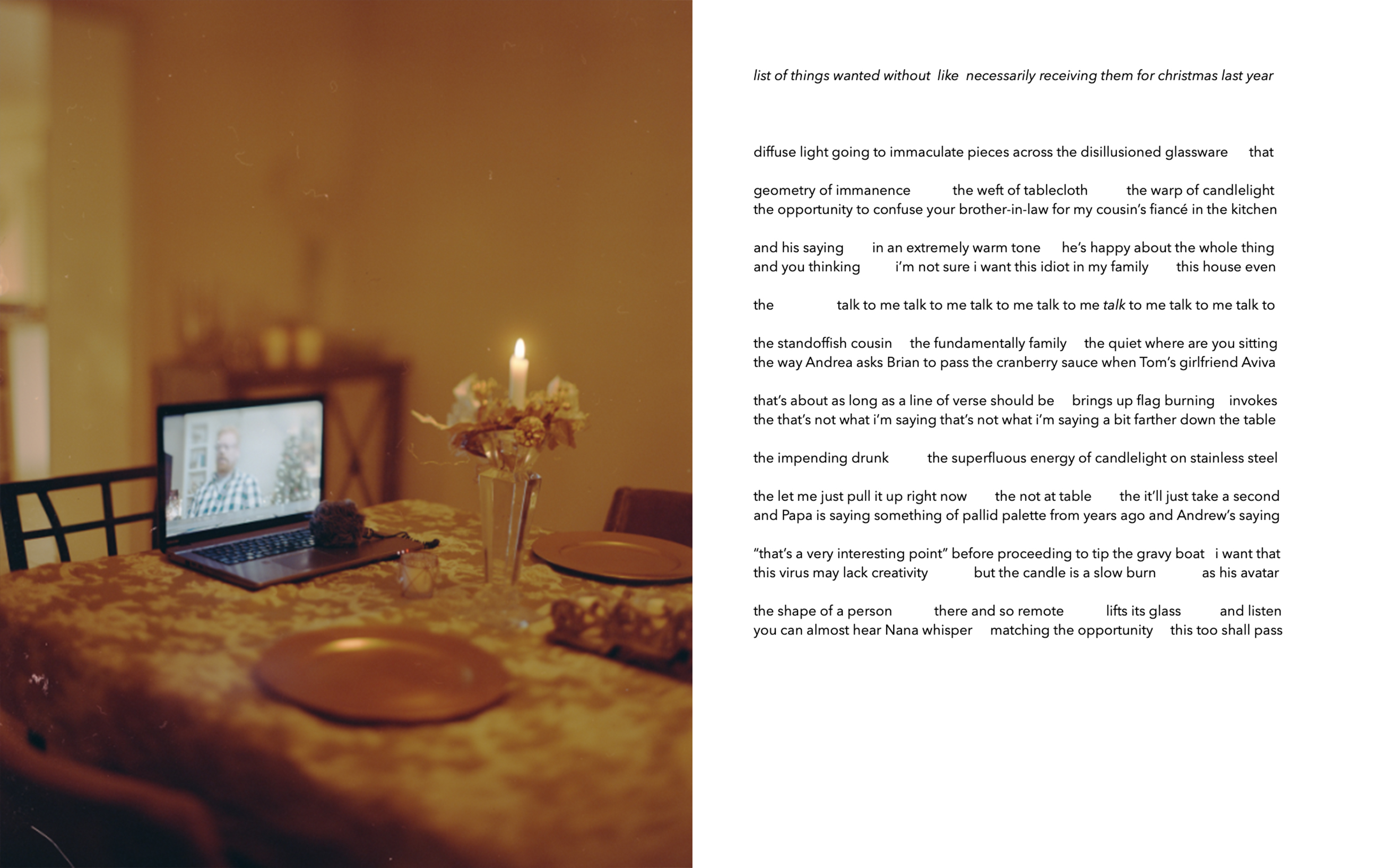
Derek Boswell, this too. Taken on December 25th, 2020 @ 5:14pm with a Full-Spectrum Converted Sony A7R.
January 21, 2021

Derek Boswell, looking forward to yesterday. Taken on December 25, 2020 @ 4:48pm with a Full-Spectrum Converted Sony A7R.
Checking In on an Old Copper Beech
Checking In on an Old Copper Beech
Johannes Zits
This performance occurred in London, Ontario where Toronto-based artist Johannes Zits was in residence at McIntosh Gallery beginning in March 2020. Regrettably, after two weeks, the residency was cut short due to the Covid-19 pandemic. The artist carried on with research and performances including Checking in on an Old Copper Beech, in which he interacts with a much-loved tree on Western University’s campus.
For the past ten years, Zits has been working with trees around the world. From Cambodia to Cuba, the trees he chooses tend to have unique historical or cultural value within their communities. Some have borne witness to horrific human tragedies. Others mark the gradual development of communities as a gathering place or landmark.
Using nonverbal actions, he approaches nature as a body that is alive, vulnerable, and socially contextualized. Instead of making nature a passive backdrop in front of which human history unfolds, his encounters with trees are reflective and empathetic. Aligned with panpsychism, a philosophical world view in which all matter has consciousness, Zits’ practice shares an affinity with cultures in which humanity is seen as continuous with nature. To this end, he often collaborates with local communities to enhance his performances and interactions.
Performance by Johannes Zits
Videography by Vlad Lunin, assisted by Ed Pien
Aerial Footage by Vlad Lunin
Edited by Vlad Lunin and Johannes Zits
Produced by McIntosh Gallery
About the artist
Since graduating with a BFA from York University in 1984, Johannes Zits has presented work across Canada as well as internationally. In 2013, Zits performed at the 8th Encuentro, Sao Paulo, Brazil and presented a collection of his videos at Le festival international du film sur l’art, Montreal. In 2014, he presented variations on the performance Island at M:ST Festival, Calgary, Yuz Museum, Shanghai and at Meta 2014, Chongqing, China.
Johannes Zits has achieved global recognition for his performances and videos about the body and how it interacts with social and natural environments. His approach to nature is collaborative. He treats it as another sentient body replete with vulnerabilities, movements, desires and dynamic affective relationships. His collaborative approach is evident in the videos Elemental Gestures, in which he empathizes with driftwood, and Embodying Nature (2010), which combines a two-person performance in a Chinese bamboo forest with group actions in a gallery setting.
The Opening of a Leaf
The Opening of a Leaf
Community Photography Project
One aim of my residency at McIntosh Gallery is to acknowledge the life forces within trees. It is only through ongoing observation of minute detail that we become aware of their growth over time. Bearing witness to these ever-unfolding changes, we become intimate with the tree and acknowledging the life force within it. – Johannes Zits
Stasis is not part of the natural world. Everything in nature, including trees, changes over time. Much of this is gradual and easily overlooked. Seasonal grow cycles provide the clearest evidence of the dynamic force that guides trees through time and space over their long lives.
When we closed our doors in mid-March, we cut short Johannes Zits' artist residency Listening to Trees. We thank the artist, Mkomosé (Dr. Andrew Judge), and all other contributors for rescheduling project-related events and programs to Spring 2021. During the interim, Johannes has been developing performances based on his research and documentation taken from his time in London.
Now is the best time of year to experience the changes in the trees around us. And with so many of us at home during this cool and quiet spring, we have opportunity to experience and celebrate what we often take for granted.
We invite you to participate in Johannes’ ongoing residency by photographing unfurling tree buds in your backyard, in a park or an alley nearby, or anywhere trees grow in your community. Visit one tree at least twice a week over the next month to witness and document its growth. Share your images with us on social media by using #TheOpeningOfALeaf or by tagging @McIntoshGallery, or email images directly to mcintoshgallery@uwo.ca.
Community photo submissions:
Exhibition Walk-throughs & Visiting Artist Lectures:
Insect as Idea
Insect as Idea
Carl Beam, Christi Belcourt, Catherine Chalmers, Andrea Cooper, Aganetha and Richard Dyck, Jude Griebel, The Institute of Queer Ecology, Jennifer Murphy and Amy Youngs
Featuring insect specimens from the Zoological Collections, Department of Biology, Western University
Curated by Dr. Helen Gregory & Dr. Nina Zitani
Exhibition Panel Discussion:
Thelma Rosner: Where Can I Go Now?
Where Can I Go Now?
Thelma Rosner
Curated by Helen Gregory
Exhibition Walkthrough:
Angie Quick: the moonlight made me do it
the moonlight made me do it
Angie Quick
Curated by Helen Gregory
Exhibition Walkthrough:
Greg Curnoe: What About Me?
What About Me?
Greg Curnoe
Curated by Brian Lambert
at TAP Centre for Creativity
Exhibition Teaser Trailer:
Exhibition Walkthrough:
The Botanical Turn
Featuring Carrie Allison, Paul Chartrand, Joscelyn Gardner, Zachari Logan, Sarah Maloney, and Amanda White
Moderated by Curator, Dr. Helen Gregory
October 7, 2021
Exhibition Panel Discussion:
Exhibition Walkthrough:
Michelle Wilson: Remnants, Outlaws, and Wallows
Remnants, Outlaws, and Wallows
Michelle Wilson
August 5 – September 11, 2021
Exhibition Walk-through:
Virtual Symposium:
Ellen Moffat: becoming again beginning undone
becoming again beginning undone
Ellen Moffat
June 24 – July 24, 2021
Exhibition Walk-through:
Faith Patrick: The No No-Exit Closet
The No No-Exit Closet
Faith Patrick
June 24 – July 24, 2021
Exhibition Walk-through:
Doug Dolman: In Search of Symbol
In Search of Symbol
Doug Dolman
April 29 – June 12, 2021
Exhibition Walk-through:
Artist Interview:
Written on the Earth
Written on the Earth
Hannah Claus, Patrick Mahon, Ellen Moffat, Joel Ong, Eeva Siivonen, and Matthew Trueman
March 4 – April 17, 2021
Exhibition Walk-through:
Exhibition Panel Discussion:
Computational Arts in Canada 1967-1974
Computational Arts in Canada 1967-1974
November 5 – December 12, 2020
Curator Talk:
Ibghy & Lemmens: Theatre From the Jungle
Theatre From the Jungle
Ibghy & Lemmens
September 17 – October 24, 2020
Artist Talk:


